Music is a language and just like any other language, it is bound to a set of rules and a particular time frame. I assume you have already taken a quick peek at the musical sheet.
The time frame means the duration of each musical note. So, this guide is about how many beats is a whole note. In fact, I will be sharing the entire music theory about musical notes and symbols.
However, before that, let me assure you one thing. Understanding musical notes and its values will be a cakewalk if you concentrate. So, let's begin with the guide. Before we jump on whole note and other stuff, first understand what a note in sheet music means.
What is a Note?
A note is a symbol that denotes a particular sound. If you have ever looked at piano sheet music, you may have noticed the jumbled combination of dots, lines, and circles.
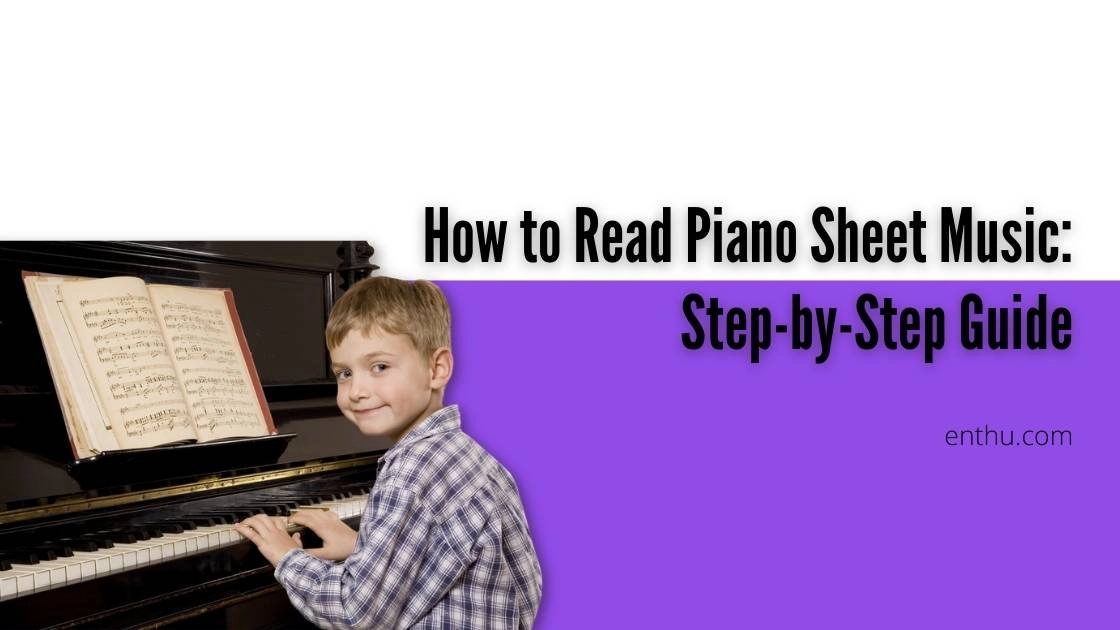
1. What is a Whole Note?
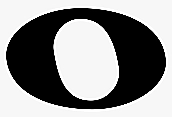
A whole note is a musical notation in sheet music, consisting of 4 quarter notes or 2 half notes. A whole note is considered as the longest note value in music theory.
2. How Many Beats is a Whole Note?
4 beats is a whole note. However, it varies as per time signature If the bottom number is 4, whole note will have 4 beats, as you see in 4/4 time signature.
Whereas, if the bottom number is 2 as per the 2/2 signature or cut time, there will only be 2 beats in a whole note. Though note values in whole note last longer, they are not that easy to play. You have to be very attentive. Otherwise, you will lose track of beats.

3. How to Draw a Whole Note?
Whole note is easier to distinguish in sheet music as it does not have a stem. Draw a side-bending zero on staff to get a perfect whole note symbol.
Fill the zero shape from inside to look it more convincing. Moving ahead, let's know more about other musical notes and their values.
4. Quarter Note
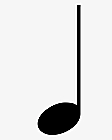
Quarter notes are the most common type of notes in piano music. Simply speaking, a quarter note lasts for one count. Informally, you can say that a whole note is made up of 4 quarter notes.
This type of note is identified as a closed note head with a stem (thin, vertical line in sheet music). It is pointing up if the note is below the 3rd line of the staff. On the other hand, pointing down with a curvy end if above or on the 3rd line of the staff.
Quarter notes are the most used notes and evidently, these are every composer's favorite note. According to Collins Dictionary, a quarter note or a crotchet is played for one-quarter of the duration of a semibreve or whole note.
5. Half Note
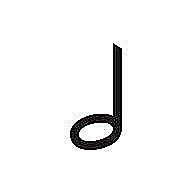
A half note has 2 beats. In short, it consists of two-quarter notes. A half note is slightly different than a quarter note. It is drawn with an open circle instead of a closed one.
The step could be placed anywhere in the staff, according to the music you are playing.
6. Dotted Half Note

A dotted half note looks just like a half note. But it is identified by a small dot next to the note head. A dotted note adds ½ of the original note value to a note. So, if a half note lasts for 2 beats, we add 1 beat to the dotted half note.
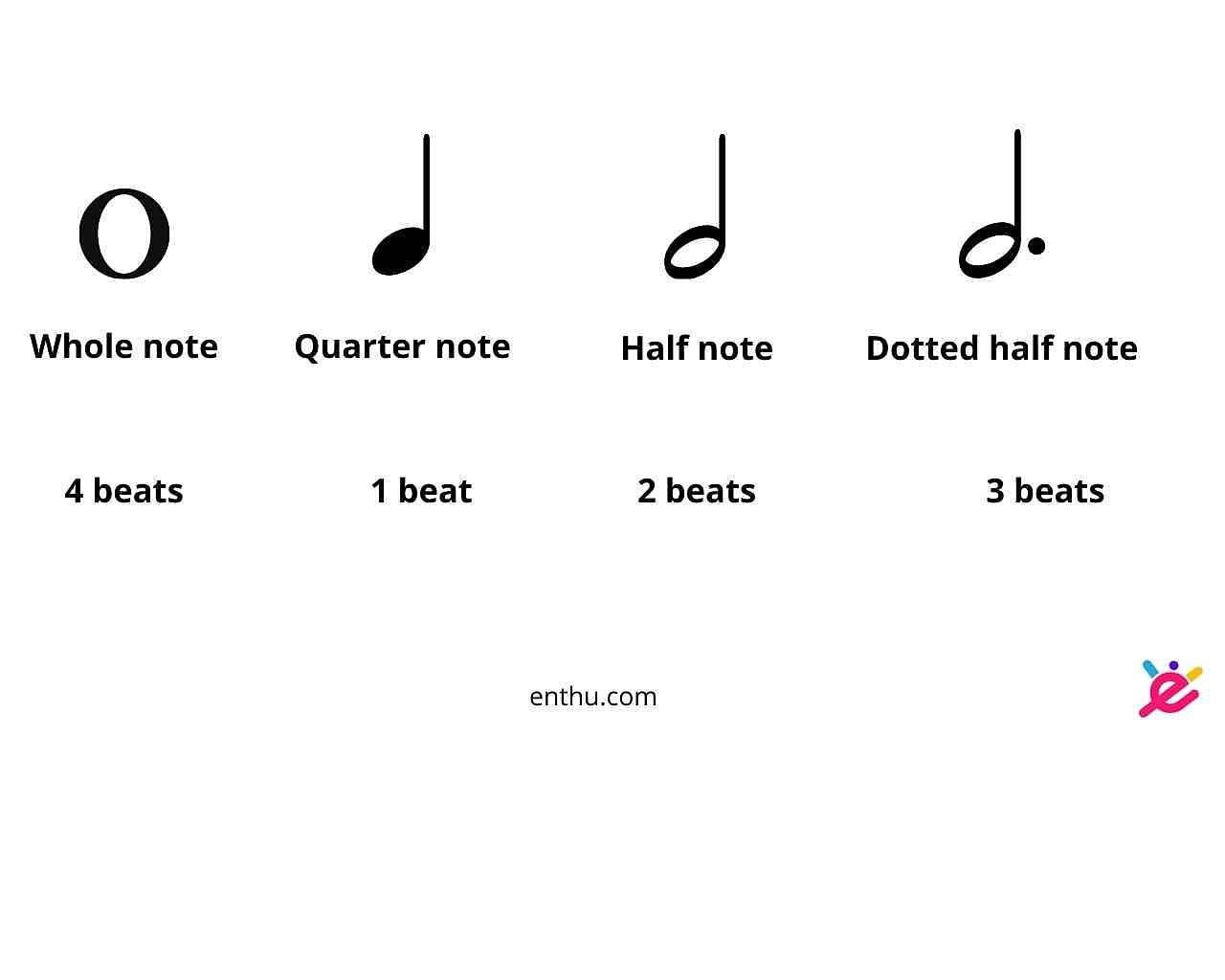
7. Why Are There Different Symbols for Notes?
In sheet music, notes work as a medium that conveys the information associated with dynamics, tempo, or bpm. For example, if the notation is placed higher on the staff, then it will naturally sound higher in pitch.
Similarly, the notes placed lower in the staff are lower in pitch. So, notes function as an indicator. Evidently the placement of a note on the piano sheet tells everything about the music piece.
See, this is the beauty of musical notes and symbols. The accurate placement of a notation makes it easier for the pianist to read and understand a composition the best possible way.
8. How to Make Longer Notes?
What if you want to play a single note for longer duration? Can you do that? Yes, you can. You can do that with ties in music.

As you can expect from the name, a tie is a curve that joins two similar notes of the same pitches. A picture should be added Ties are a rhythmical way to get elongated notes by tying two notes together.
9. How to Count Tied Notes?
It is rather simple to calculate. Let's understand with an example. If you tie two half notes together, you get a whole note. Because half note has 2 beats.


Conclusion
The theory might be a little overwhelming for a beginner. But the process will get easier once you sit in front of the piano and play. All you have to do is sit, relax, read about notes, and start playing the piano.
Soon, these things will fit into your routine. If you need any professional guidance, get yourself a teacher who can direct you well. I hope this guide was helpful to you. Keep practicing until we meet again.
FAQs
1) How many beats is a half note?
2 beats.
2) Is a whole note always 4 beats?
Not always. It varies as per time signature. That is why, it's better to define whole note as 4 quarter notes.
How many beats are there in a whole note? There are 4 beats in a whole note. We can also say, a whole note consists of 4 quarter notes (1 beat each) or 2 half notes (2 beats each).
3) How many beats does a whole note last for?
As the whole note has 4 beats, it lasts for 4 counts.
4) What is the difference between a half note and a whole note?
Half note is half of the whole note. By that mean, half note has 2 beats whereas, whole note has 4 beats duration.
5) Is it essential to learn music theory?
Music theory is essential for learning the fundamentals of music and excelling the piano. The sheet music theory helps in understanding how music is written with musical notes.

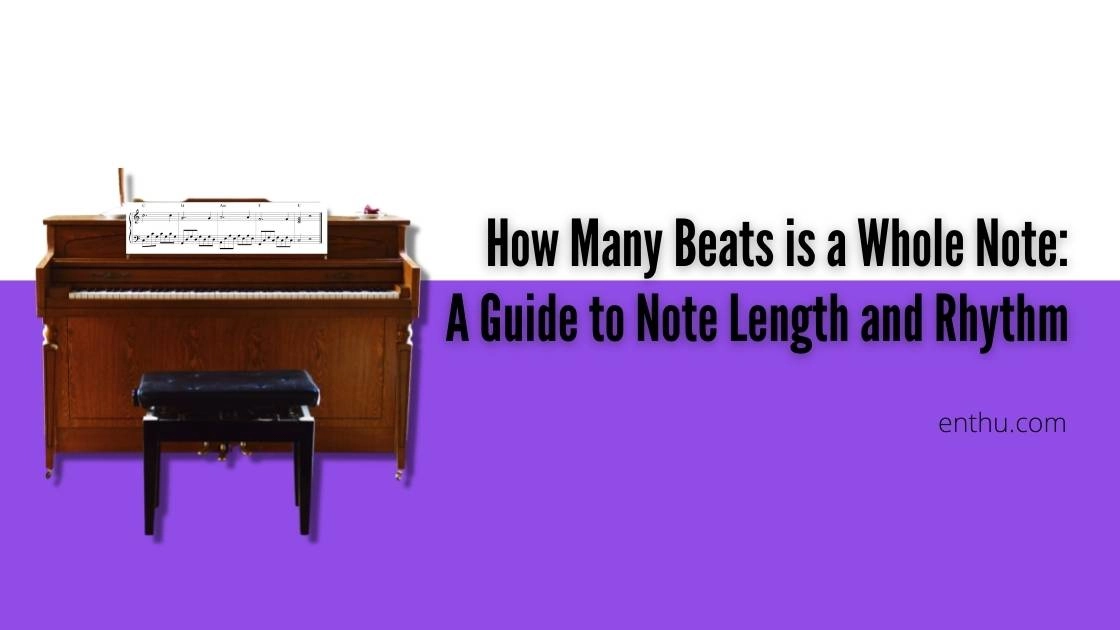
Comments